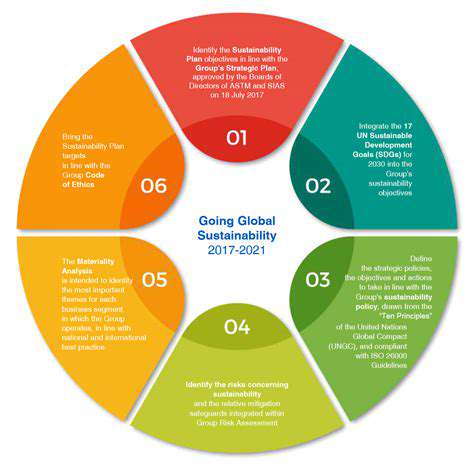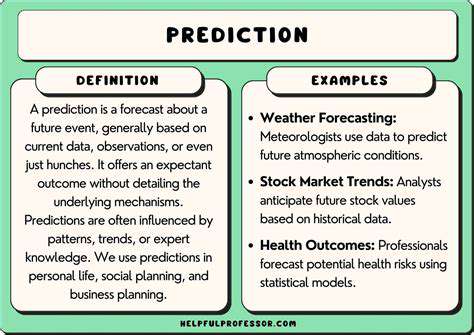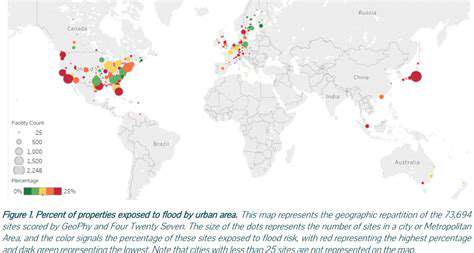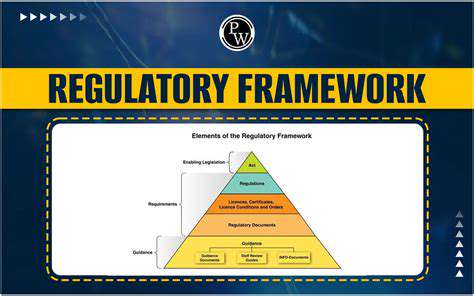Smart Building Security: Advanced AI Features
Modern buildings are undergoing a security revolution. Traditional lock-and-key systems are being replaced by intelligent solutions that combine multiple technologies for unprecedented protection. The shift toward integrated security isn't just about technology—it's about creating safer spaces where people can work and live without fear. These advanced systems don't just respond to threats; they anticipate them, creating environments that adapt to potential dangers before they materialize.
Integrated Security Systems
Imagine a security network where every component communicates seamlessly. Doors alert cameras when opened, motion sensors trigger lighting adjustments, and ventilation systems respond to air quality changes—all in real time. This level of coordination transforms security from isolated measures into a living, responsive ecosystem. The result? Fewer blind spots, faster response times, and security personnel who have complete situational awareness at their fingertips.
Advanced Access Control
Gone are the days when a stolen keycard could compromise an entire building. Today's access systems combine biometric verification with behavioral analytics, creating multiple layers of defense. Facial recognition that adapts to aging or changes in appearance, fingerprint scanners that detect live tissue—these innovations make unauthorized access exponentially more difficult. What's more, these systems learn from each interaction, constantly improving their accuracy.
Predictive Maintenance and Threat Detection
Smart buildings possess an almost uncanny ability to anticipate problems before they occur. Sensors monitor equipment vibrations, temperature fluctuations, and energy consumption patterns, flagging anomalies that human observers might miss. This predictive capability doesn't just prevent security breaches—it extends the lifespan of critical infrastructure while reducing maintenance costs. The building essentially develops a sixth sense for potential issues.
Environmental Monitoring and Response
Air quality sensors now do more than detect smoke—they identify chemical signatures, particulate levels, and even biological contaminants. When paired with smart ventilation systems, they can isolate hazards while maintaining safe conditions elsewhere in the building. These systems create environments that actively protect occupant health rather than simply meeting minimum safety standards. The result is spaces that adapt to both security and wellness needs.
Data Analytics and Reporting
The true power of smart security lies in its ability to transform raw data into actionable intelligence. Pattern recognition algorithms sift through millions of data points to identify subtle anomalies that might indicate a security risk. This analytical approach turns every incident—whether a false alarm or real threat—into a learning opportunity that strengthens future responses. Over time, the system develops an increasingly accurate understanding of normal versus suspicious activity.
Integration with Other Building Systems
Security no longer exists in isolation. Modern systems communicate with HVAC, lighting, and even elevator controls to create coordinated responses to emergencies. During an incident, escape routes can be automatically illuminated while elevators are secured and ventilation systems contain smoke or chemical spread. This level of integration creates buildings that respond to threats with the precision of a living organism. The building itself becomes an active participant in its own security.
Predictive Analytics for Proactive Security
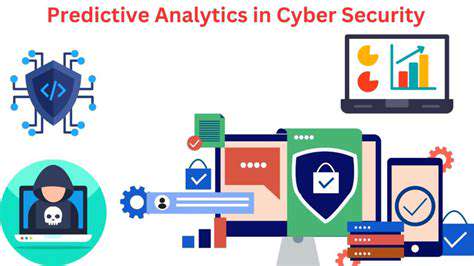
Understanding the Power of Predictive Analytics
Predictive analytics represents a paradigm shift in security strategy. Rather than analyzing past breaches, these systems use complex algorithms to forecast where and when threats might emerge. This forward-looking approach transforms security from reactive to anticipatory, allowing measures to be implemented before incidents occur. The technology doesn't predict the future—it calculates probabilities with remarkable accuracy based on countless variables.
Key Applications in Business
Retail stores use these systems to predict shoplifting hotspots, while corporate campuses identify patterns that might indicate insider threats. Financial institutions deploy them to detect subtle signs of fraudulent activity often invisible to human analysts. The common thread? These applications all leverage data to stay several steps ahead of potential problems. What once required teams of analysts can now be achieved through machine learning models that improve with each data point.
The Role of Data in Predictive Modeling
Effective predictive models require more than just large datasets—they need relevant, high-quality information. Think of it as teaching a security guard: you wouldn't just show them random footage, you'd provide targeted training on recognizing suspicious behavior. Similarly, these systems are trained on carefully curated data that represents real-world security scenarios. The cleaner and more representative the data, the more accurate the predictions become.
Machine Learning Algorithms at Play
Different security challenges require different analytical approaches. Anomaly detection algorithms excel at spotting unusual patterns in access logs, while clustering algorithms can identify groups of related events that might indicate coordinated attacks. The most sophisticated systems combine multiple approaches, using ensemble methods to cross-validate their predictions for maximum reliability.
Forecasting Future Trends
These systems don't just predict individual events—they identify evolving patterns. A gradual increase in after-hours access attempts at a particular entrance, subtle changes in network traffic patterns, or unusual movements in restricted areas all contribute to a constantly updated threat assessment. This allows security teams to adjust their strategies in response to emerging trends rather than waiting for incidents to occur.
Improving Decision-Making Processes
Predictive analytics transforms security from guesswork to science. Instead of relying on intuition or past experience alone, security professionals can base decisions on quantifiable probabilities. This data-driven approach leads to better resource allocation—placing guards where they're most needed, adjusting surveillance coverage based on predicted threat levels, and prioritizing investigations based on calculated risk assessments.
Overcoming Challenges and Limitations
No system is infallible. Predictive models can generate false positives or miss novel threats that don't match historical patterns. The most effective implementations combine algorithmic analysis with human expertise, creating a checks-and-balances system where technology alerts humans to potential issues, and humans refine the algorithms based on real-world outcomes. This symbiotic relationship produces results greater than either could achieve alone.
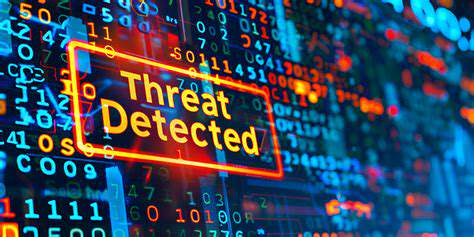
Community-scale sustainability represents the next frontier in building security. When entire neighborhoods adopt smart security measures, they create networks of protection that extend beyond individual properties. This collective approach generates shared intelligence, where patterns detected at one location can alert nearby buildings to potential threats. The whole becomes more secure than the sum of its parts.
Enhancing Access Control with Biometrics and AI
Biometric Authentication: A Secure Foundation
The human body becomes the ultimate security token in modern access systems. Unlike passwords or cards that can be stolen or duplicated, biometric identifiers are inherently tied to their owner. Contemporary systems go beyond simple fingerprint scans—they analyze vein patterns, measure gait characteristics, and even detect subtle facial microexpressions that are impossible to fake. This biological verification creates security that's as unique as the people it protects.
AI-Powered Analysis for Enhanced Accuracy
Artificial intelligence transforms biometrics from static verification to dynamic identification. Machine learning algorithms compensate for changes in appearance—recognizing a face despite glasses, facial hair, or aging. They distinguish between identical twins by analyzing microscopic skin texture patterns. This adaptive capability means security systems become more accurate over time, learning to recognize authorized individuals under increasingly diverse conditions.
Real-Time Threat Detection and Response
Modern systems don't just verify identity—they assess behavior. An authorized user attempting access at an unusual time or location triggers additional verification steps. Multiple failed attempts from different biometrics prompt automated lockdown protocols. This dynamic response capability turns access control from a binary gate into an intelligent filter that adapts to emerging threats in real time.
Improved User Experience and Efficiency
Paradoxically, stronger security now creates less friction. Facial recognition allows hands-free access while carrying packages. Bluetooth-enabled mobile credentials automatically unlock doors as authorized users approach. These seamless interactions satisfy our growing expectation for convenience while actually increasing security—a rare win-win in the access control world.
Integration with Existing Security Infrastructure
The most effective implementations don't require ripping out existing systems. Modern biometric solutions integrate with legacy card readers, alarm systems, and surveillance networks. This phased approach allows organizations to upgrade security without operational disruption, blending cutting-edge technology with proven infrastructure.
Scalability and Flexibility for Future Growth
Cloud-based biometric systems can grow seamlessly with organizations. New facilities can be added to the network with minimal configuration, and user permissions can be adjusted enterprise-wide with a few clicks. This scalability ensures that security measures keep pace with business expansion without requiring constant reinvestment in new infrastructure.
Cost-Effectiveness in the Long Term
While the initial investment may be significant, biometric systems reduce costs in multiple ways: eliminating card replacement expenses, decreasing security personnel requirements through automation, and preventing losses from unauthorized access. When calculated over a typical system lifespan, advanced access control often proves more economical than traditional methods.
Beyond Security: Optimizing Building Operations
Improving Energy Efficiency
Smart buildings achieve remarkable energy savings by making thousands of micro-adjustments most humans wouldn't notice. Lights dim slightly when natural light increases, HVAC output adjusts based on real-time occupancy counts, and equipment schedules optimize for both energy costs and demand peaks. These automated optimizations often reduce energy consumption by 20-30% without any noticeable impact on occupant comfort.
Enhanced Maintenance and Safety
Predictive maintenance transforms facility management. Vibration sensors detect bearing wear in motors months before failure. Thermal imaging identifies electrical hotspots before they cause outages. This proactive approach eliminates 80% of emergency repairs, allowing maintenance to be scheduled at convenient times with proper preparation. The result? Higher equipment reliability and lower maintenance costs.
Streamlined Building Management
Centralized control systems provide a unified view of building operations. Facility managers can monitor energy use, security alerts, and maintenance needs from a single interface. Automated workflows route issues to the appropriate personnel, track resolution times, and even order replacement parts automatically when sensors indicate impending failures.
Improving Occupant Experience
Smart buildings adapt to their users. Conference rooms automatically configure lighting and temperature based on scheduled meeting types. Wayfinding systems guide visitors efficiently through complex spaces. These subtle enhancements create environments that feel intuitively responsive to human needs, boosting both satisfaction and productivity.
